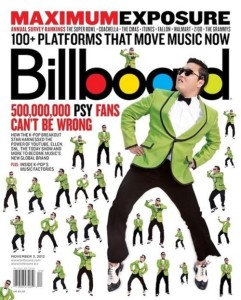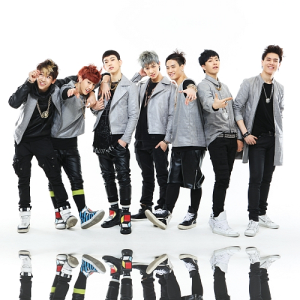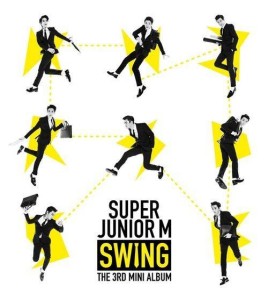 It’s almost midnight in your time zone, but you’re still awake. You — like so many other K-pop fans — are waiting for the latest MV from your favorite group to drop. And what are you going to do when it does drop? Watch it on their official YouTube page as many times as possible, of course.
It’s almost midnight in your time zone, but you’re still awake. You — like so many other K-pop fans — are waiting for the latest MV from your favorite group to drop. And what are you going to do when it does drop? Watch it on their official YouTube page as many times as possible, of course.
With YouTube consistently taking over more and more of the mass media market it makes sense that K-pop would have a large presence on the site. So large, in fact, that Billboard has recently released statistics taken from YouTube views to calculate the top most viewed K-pop MVs.
What we are going to discuss today is why they split their numbers up between most viewed video in America and most viewed video globally. While it is obvious that K-pop has a huge following all over the world, it is also important to note that YouTube itself is most prevalent in the West. Countries like China and Korea have their own video viewing websites and there are countries in Europe where YouTube content is blocked.
So let’s get to discussing, why break up the numbers into America vs. Global? Does culture really affect people’s taste in pop music that much?
Lindsay: I think the first thing to notice is that the songs in the top five aren’t really that different between the US and internationally. Out of the numbers for January, February, and March that Billboard provided the most interesting to me are January and March because they actually showed a difference.
 In January, what does it say about the US that the market there ranked GOT7’s debut as more worth watching than Girl’s Day’s “Something,” like the rest of the world?
In January, what does it say about the US that the market there ranked GOT7’s debut as more worth watching than Girl’s Day’s “Something,” like the rest of the world?
In March, why was Orange Caramel’s “Catallena” in the top five in the US, but not internationally? I never thought the US would show such a strong interest in a video involving giant sushi girls and Punjabi music.
Overall, it seems like the numbers of views were based more on how popular a group is than what the music is like, evidenced by the all-kills by SNSD and 2NE1. Of course they have the most views, they have the biggest fandoms! I’m not sure we can actually attribute their high view statistics to quality music, sadly.
Lo: What caught my eye wasn’t the top songs, but those ranked three and lower. Ga-in’s “Fxxk You,” “Catallena” and “Without You” by Lee Michelle are all much smarter than the usual song and dance, which makes sense. American pop music sucks right now, and it has for over a year. The only songs that have managed to make a lasting impression on the public are “Get Lucky,” “Swimming Pools (Drank),” and anything by Macklemore. Why go to a new genre when it has the same problems?
 Joyce: Totally agree with you, Lo. Also, I’m pretty sure that the list missed out TVXQ‘s “Something”, because it definitely clocked more views that the other “Something”. What surprised me was Super Junior-M‘s “Swing” ranking lower than Crayon Pop‘s “Uh-ee” globally, since I expected the wider Super Junior fandom to buoy the views better, as is the case in America. Perhaps since “Swings” is a Mandarin song, the global appeal, excluding China, is not as wide as the universal anticipation of Crayon Pop’s follow-up song following the viral “Bar Bar Bar”. Maybe if China used YouTube extensively, the ranking of “Swings” might chart pretty different globally.
Joyce: Totally agree with you, Lo. Also, I’m pretty sure that the list missed out TVXQ‘s “Something”, because it definitely clocked more views that the other “Something”. What surprised me was Super Junior-M‘s “Swing” ranking lower than Crayon Pop‘s “Uh-ee” globally, since I expected the wider Super Junior fandom to buoy the views better, as is the case in America. Perhaps since “Swings” is a Mandarin song, the global appeal, excluding China, is not as wide as the universal anticipation of Crayon Pop’s follow-up song following the viral “Bar Bar Bar”. Maybe if China used YouTube extensively, the ranking of “Swings” might chart pretty different globally.
Also, how did Stellar‘s “Marionette” rank above CN Blue and B.A.P globally, but stayed pretty far behind in the US? Maybe Americans are already desensitized to provocative MVs with the likes of Miley Cyrus, that Stellar’s was pretty much child’s play and really not worth the infamous virality that it garnered in Asia. Going along with this theory, this probably also explains how AOA‘s “Miniskirt” ranked 3rd in January globally, but didn’t even reach top eight in the US.
Lindsay: I’m going to have to agree with you on that, Joyce. The K-pop version of sexy is hardly sexy at all by American standards. Also going back to what Lo was saying about quality, songs like “Marionette” aren’t actually very good music wise and they rely on their sexiness to carry them in the charts even in the Korean market. Put those two deductions together and you’ve explained why AOA and Stellar didn’t make the American YouTube cut; not enough sexy and not enough catchy.
Also — excluding 2NE1 and SNSD — does anyone else feel like the US has boy band fever? It seemed like the boys ranked higher in the US numbers overall.
 Lo: Actually, it’s split right down the middle- 12 of the 24 entries are male artists, the other half are women (I’m counting “Fxxk You” as female as Bumkey is featuring in Ga-in’s song). The fever I see is underdog fever. BtoB, BTS, GOT7, Sunmi, B1A4, Lee Michelle, and Orange Caramel all have fans domestically, but they’re not huge. Americans like underdogs, it’s ingrained in our culture. We like seeing David beat Goliath, no matter the field.
Lo: Actually, it’s split right down the middle- 12 of the 24 entries are male artists, the other half are women (I’m counting “Fxxk You” as female as Bumkey is featuring in Ga-in’s song). The fever I see is underdog fever. BtoB, BTS, GOT7, Sunmi, B1A4, Lee Michelle, and Orange Caramel all have fans domestically, but they’re not huge. Americans like underdogs, it’s ingrained in our culture. We like seeing David beat Goliath, no matter the field.
Joyce: I’m not sure if I would qualify it as underdog fever, but I do spot a trend that the US are more inclined to subscribe to comebacks from already well-established group or their spinoffs, such as TVXQ, Rain, Toheart, and Orange Caramel. This seems to suggest that US fans are not as easily influenced by viral MVs, instead merely checking out groups that they have interest in.
Lindsay: So we’ve discussed some of our ideas about why certain songs were in the top Youtube rankings, but why do you guys think Billboard decided to compile these numbers in the first place?
 Lo: Honestly, I think it’s because K-pop is starting to catch on in the American mainstream. Crush made it into the iTunes Top 10 downloads and charted at 63 on Billboard. It’s becoming more accepted, and more popular; and as a music company, jumping into a new trend in music is smart business.
Lo: Honestly, I think it’s because K-pop is starting to catch on in the American mainstream. Crush made it into the iTunes Top 10 downloads and charted at 63 on Billboard. It’s becoming more accepted, and more popular; and as a music company, jumping into a new trend in music is smart business.
Joyce: That’s definitely true, this trend can also be seen in a sudden jump in the number of K-pop acts making a presence in the US, especially through concerts. Seeing that this trend is only going to get more explosive, it is in the interest of the audience and the companies to analyze whether Americans have a different taste in K-pop, or if they merely follow the global wave. Evidently, the divide is significant enough that Billboard thought it would bring more light to this matter. Japan’s music industry is second in size to only the US, and now that K-pop acts have already found success in Japan, they only have higher to go from there.
Lo: And hopefully that includes concerts in cities other than New York or L.A. Come to the Midwest! We don’t mind roadtrips!
How about you, readers? What’s your take on Billboard’s statistics?
(Billboard, YouTube. Images via: Billboard, JYP Entertainment, Ceci, Top Class Entertainment, SM Entertainment)


